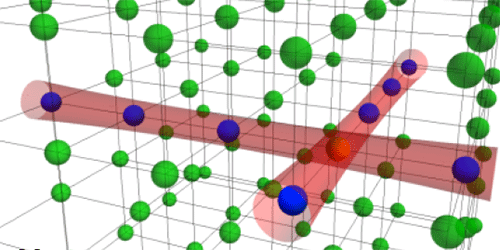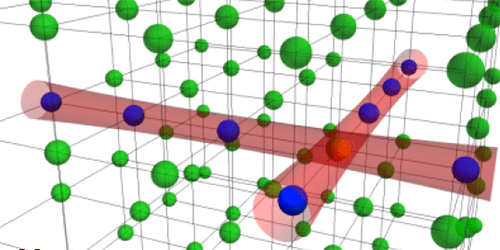Pinpointing Qubits in a 3D Lattice
One challenge facing quantum computing is changing bits of quantum information without disturbing nearby qubits. A new experiment demonstrates this sort of “addressability” with atomic qubits in a three-dimensional lattice formed with optical laser beams. The researchers performed arbitrary logic operations on single atoms in the lattice using a combination of lasers and microwave pulses, while having a minimal effect on nontargeted atoms.
In relation to other qubit candidates, neutral atoms have the advantage that they can naturally be “filed” into very large two- or three-dimensional arrays. Previous work has demonstrated the addressing of single qubits in an atomic system, but there was no nearby quantum information that was at risk of being disturbed.
David Weiss and his collaborators at Pennsylvania State University have addressed single qubits in a compact, three-dimensional lattice. They generated their optical lattice by crossing three pairs of laser beams. The interference between these beams created a array of atom traps with 5 micrometer spacing. The researchers filled the lattice with cesium atoms and then targeted one atom with another pair of lasers that intersected at a single lattice site of their choosing. These “addressing” lasers caused a shift in the electronic levels of the target atom. The team then applied microwave pulses tuned to frequencies that only induced transitions in the (shifted) target atom. The pulses have the effect of a logic gate that changes the qubit’s quantum state, depending on the desired operation. The authors verified that nontargeted qubits did not change state during the operation. The three-dimensional architecture means this method could be scaled up to much larger systems.
This research is published in Physical Review Letters.
–Michael Schirber





